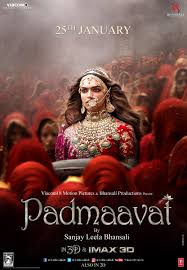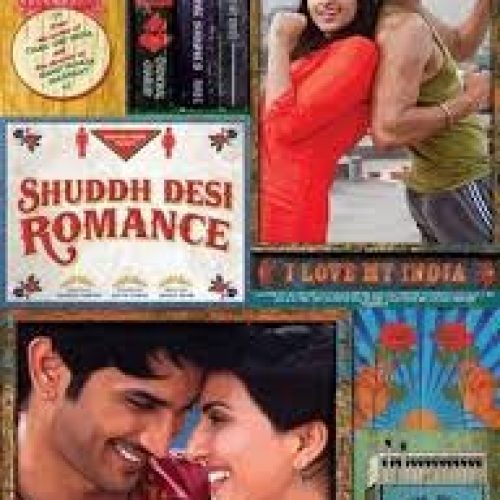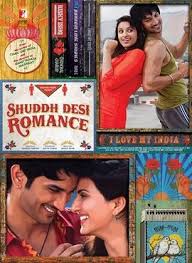In an age of lavish storytelling, few films manage to blend opulence with intensity as well as this one. Padmaavat, directed by Sanjay Leela Bhansali, stars Deepika Padukone, Shahid Kapoor, and Ranveer Singh in a historical drama set in 13th-century India. The story, based on the epic poem “Padmavat” by Malik Muhammad Jayasi, takes place in the kingdom of Mewar, where the film’s central characters navigate love, honor, and obsession. Known for his visually stunning films, Bhansali has crafted a visually rich and grand period piece that delves into the themes of pride, sacrifice, and the clash of civilizations.
At the heart of the narrative is Padmavati (Deepika), the queen of Mewar, who becomes the object of obsession for the ruthless Sultan Alauddin Khilji (Ranveer). Khilji, intoxicated by stories of her unparalleled beauty and intelligence, embarks on a destructive mission to conquer Mewar. Standing between the Sultan and his obsessive desires is Maharawal Ratan Singh (Shahid), the noble king and Padmavati’s devoted husband. The film primarily follows the tense standoff between Khilji’s invasion and Mewar’s efforts to protect its honor, with Padmavati playing a central role in the unfolding drama. As the conflict escalates, so do the stakes for all involved, creating a dramatic and intense build-up towards a climactic finish.
One of the standout elements of the film is undoubtedly Ranveer’s portrayal of Alauddin Khilji. From the moment he appears on screen, he commands attention with an unhinged intensity that makes Khilji one of the most compelling villains in recent memory. Ranveer’s performance oscillates between madness and calculated cruelty, creating a character who is at once terrifying and fascinating. His physicality in the role, especially during the battle sequences, adds an extra layer of menace. Deepika’s Padmavati, in contrast, is a picture of grace and dignity. While her role could have easily been overshadowed by Ranveer’s dominant presence, Deepika holds her own, bringing a quiet strength to the character. Her ability to convey deep emotion with minimal dialogue is particularly impressive, especially in moments where her silence speaks volumes. Shahid, as Maharawal Ratan Singh, delivers a controlled performance, embodying the virtues of a noble king. Though his character is more understated, Shahid successfully captures the essence of a ruler bound by honor and tradition.
The direction by Bhansali is masterful. Known for his meticulous attention to detail, he leaves no stone unturned in bringing the grandeur of 13th-century India to life. Every frame of Padmaavat feels like a work of art, from the intricately designed sets to the elaborate costumes that reflect the regal opulence of the time. Bhansali’s use of color and light is particularly striking. The film contrasts the golden warmth of Mewar’s palace with the cold, dark tones of Khilji’s camp, visually reinforcing the moral divide between the two realms. The sheer scale of the production is breathtaking, with grand battle scenes and a sweeping, immersive landscape that transports the audience to a bygone era.
The film’s music, also composed by Bhansali, adds to the immersive experience. Songs like “Ghoomar” and “Khalibali” are not only visually spectacular but serve as narrative tools, reflecting the emotional states of the characters. “Ghoomar,” in particular, showcases Deepika’s regal elegance in a dance sequence that highlights the cultural richness of Mewar. On the other hand, “Khalibali” is a wild, chaotic number that mirrors Khilji’s manic energy. The background score, composed by Sanchit Balhara, is equally impressive, heightening the tension and drama, especially during pivotal moments. The music weaves seamlessly into the narrative, never overpowering the story but enhancing its emotional weight.
Cinematography by Sudeep Chatterjee deserves special mention. The sweeping shots of Rajasthan’s desert landscapes juxtaposed with the intimate moments inside Mewar’s palace create a visually striking contrast. The film often employs wide-angle shots to capture the vastness of the battlefields and the grandeur of the royal court, while close-ups are used effectively to convey the inner turmoil of the characters. One particularly memorable shot is a scene where Padmavati stands by a window, bathed in soft golden light, symbolizing her strength and resilience. The visuals throughout the film are nothing short of stunning, making each scene feel like a carefully composed painting.
The film also succeeds in its costume design by Maxima Basu and Harpreet Rimple, with elaborate outfits that reflect the characters’ status and cultural backgrounds. Padmavati’s royal attire, complete with intricate jewelry, adds to her aura of beauty and grace, while Khilji’s darker, more rugged costumes emphasize his brutal and uncivilized nature. The attention to detail in the clothing and set design contributes to the authenticity of the historical setting, making the world of Padmaavat feel fully realized.
If there is a downside to the film, it’s that the pacing in some parts feels slow. The narrative takes its time to unfold, which might test the patience of viewers expecting a fast-paced historical drama. However, this slower pace also allows for a deeper exploration of the characters’ inner worlds and the themes of pride, honor, and sacrifice. Another potential criticism is the portrayal of Khilji as an almost caricatured villain. While Ranveer’s performance is undeniably captivating, some may argue that Khilji’s villainy is portrayed with such excess that it borders on theatrical at times.
Overall, Padmaavat is a visually stunning and emotionally resonant film that showcases Bhansali’s mastery in storytelling and direction. The performances, especially from Ranveer and Deepika, are stellar, and the film’s production values are top-notch. While it may not be for everyone, particularly those who prefer a more restrained narrative, it’s a film that leaves a lasting impression due to its grandeur, intensity, and emotional depth. Fans of epic historical dramas and lovers of visually rich cinema will find much to admire here. It’s a must-watch for anyone who appreciates the art of filmmaking at its most grandiose.







